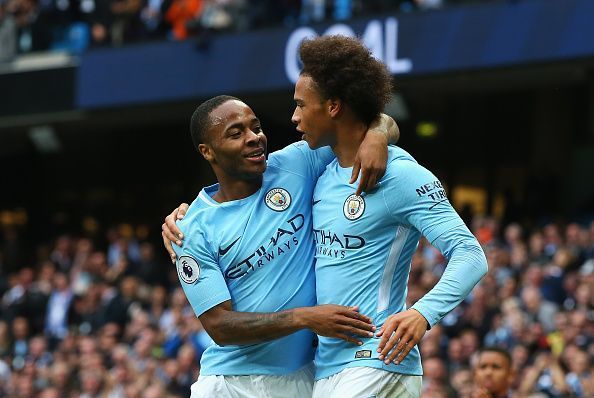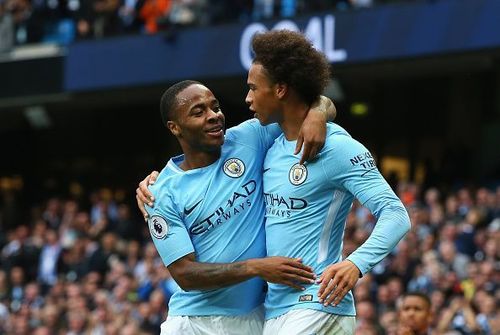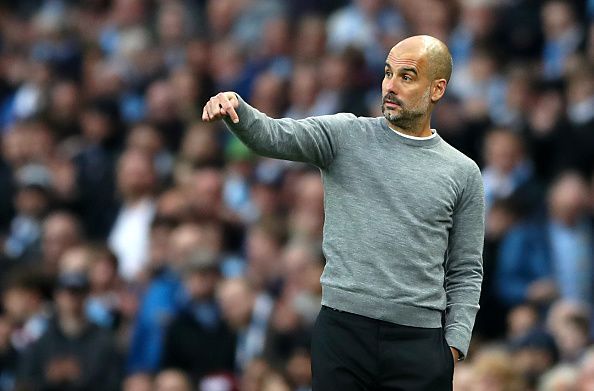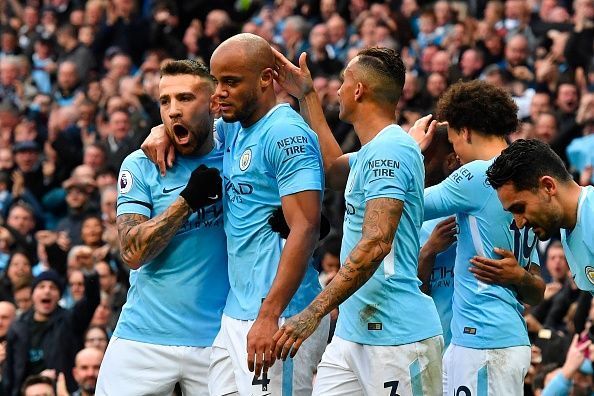
How Pep Guardiola has turned Leroy Sane and Raheem Sterling into world beaters

When we talk of Manchester City, the image that quickly comes to mind is of a financial behemoth throwing money around in an attempt to buy its way to success. Indeed, Liverpool’s recent victory over Manchester City in the UEFA Champions League quarter-final at Anfield was widely celebrated solely as the enduring power of romance and history in football, unfairly overlooking Klopp’s tactical brilliance.
Of course City are one of the richest clubs in the world; of course, City are one of the largest spenders in the football landscape. Yet in a world of PSGs, Manchester Uniteds, Real Madrids and Barcelonas, City stand out in the way they spend their money.
For instance, did you know that Manchester City do not even figure in the list of 10 most expensive football transfers of all time? Did you know their first choice strike force (Sterling, Sane, Jesus) has an average age of 22?
Their world-class youth academy and refusal to pay over the odds for Alexis Sanchez have reinforced a growing feeling that Manchester City are here to stay. A world-class youth academy, sustainable model of business, shrewd acquisitions, Pep Guardiola as manager – indeed, City have the look and feel of Roman Abramovich’s dream project at Chelsea.
Take Leroy Sane and Raheem Sterling for instance. Man to man, they aren’t perhaps the most potent strike force in the league – Alexis Sanchez - Romelu Lukaku, Mohamed Salah - Sadio Mane, and Dele Alli - Harry Kane all stake claims to be just as good, if not better.
But deployed in a suitable tactical system, they have thrived. Sterling has brushed off summer speculation linking him with a departure, and Sane has ironed out the inconsistencies in his game to command a regular place in the starting lineup.
How has Pep Guardiola turned Leroy Sane and Raheem Sterling into world beaters?
Tactical system – increasing the width of the pitch

Guardiola’s 4-3-3 stands out from a regular 4-3-3 in the way it is deployed. City aim to utilize the full length and width of the pitch. Accordingly, the centre-backs split down the middle and Fernandinho drops deep to cover.
Fullbacks occupy the half spaces ahead of the centre-backs, while Kevin De Bruyne and David Silva push higher up the pitch than expected for normal centre mids, allowing the wingers to hug the touchline.
Unlike the inside forwards in a normal 4-3-3, Sterling and Sane are encouraged to stay wide and provide width. This suits their strengths, allowing them to expose the isolated fullback with their dribbling and pace.
Out of possession, they are instructed to make clever runs into the penalty box, where they are regularly found by exquisite through balls from De Bruyne and Silva. Unlike an orthodox target man, Sergio Aguero / Gabriel Jesus regularly drop deep and wide, allowing fluidity and tactical flexibility.
Apart from these, City centre-backs are instructed to aim early cross-field passes to Sterling or Sane. This leaves them one-on-one with the fullback. Thus, even in a possession-based team, Guardiola leverages the pace and directness of Sane and Sterling to devastating effect.
Increased tactical intelligence
In modern football, attacking players need to be adept at playing across the front line. Under Guardiola, Sterling and Sane have played in numerous tactical systems and numerous individual positions, enabling them to develop increased tactical awareness.
In the first Manchester Derby, back in December, Sterling was used as the central striker, while Sane was pushed out to an unfamiliar role in the right. Guardiola’s emphasis on retaining a calculated shape while in possession to guard against counterattacks has also increased the players' awareness of space and encouraged them to take responsibility of protecting the wingbacks.
To witness a direct example of Guardiola’s influence on his players’ tactical intelligence, see this video of Guardiola showing Sterling what to do when he receives a pass with his back to goal.
The City boss clearly instructed the 23-year-old to make a run in behind when he releases possession rather than wait for a return pass, and it certainly paid dividends as Sterling carried out Guardiola’s instructions to a tee as he did just this to break Feyenoord down in City’s 1-0 UEFA Champions League win at the Etihad Stadium.
Low crosses

An understated aspect that has helped the evolution of Sterling and Sane is how City regularly make use of low drilled crosses into the players’ feet. Sterling and Sane are not the tallest or strongest players around, so regular lofted balls into the penalty box would be a criminal waste of their talents. Moreover, City do not boast the presence of target men whose flick-ons can be capitalize on by these players.
Instead, the likes of Kyle Walker and David Silva regularly play intelligent pullbacks. Sterling, for all his strengths, is not a natural finisher, Saturday’s disappointing derby performance being a perfect case in point.
Analyze Sterling’s 24 goals for the club till date this season, and one would find a good number of tap-ins. Thus, Guardiola has taken advantage of Sterling’s pace and positional awareness so that he finds himself in easy-to-score situations.
Sane, meanwhile, is mostly at the providing end of these crosses, driving to the byline with intent before putting the ball on a plate for his teammates.
Conclusion
Raheem Sterling – 24 goals and 9 assists in all competitions this season.
Leroy Sane – 13 goals and 16 assists in all competitions this season.
(All stats courtesy ESPN)
Sterling and Sane are easily having the best seasons of their respective careers till date. At the age of 23 and 22, they are bound to have their best years ahead of them, and with a manager who doesn’t seem eager to pocket the next £100 million player any time soon, they very well could go on to have long and bright futures of first-team football ahead of them.